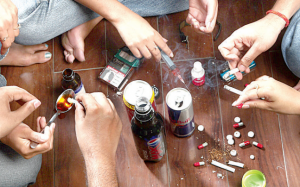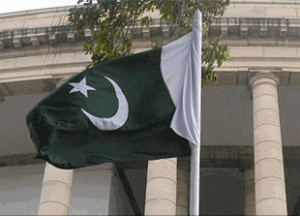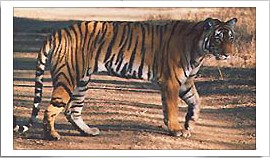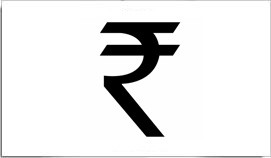Introduction
While in Delhi this summer, I will be working for the Society for Promotion of Youth and Masses (SPYM), an Indian non-governmental organization that provides various forms of social support for the underprivileged in India. For this summer project, I will be helping individuals on the margins of society who are struggling with drug abuse. Accordingly, my policy issue is drug addiction and rehabilitation. The main challenge, both in Delhi and in wider India, is overcoming the cultural stigma associated with this issue. To better understand this stigma, it is useful to take a brief look at other problems in Indian society that stem from similar roots.
Roots of Social Stigma
Many of these stigmas originate from the rigidly orthodox social set-up that still predominates in most areas of India. This set-up definitely has its benefits, including a strong emphasis on family and group togetherness, a commitment to discipline and purity, and an adherence to tradition and culture. However, it has also bred a large amount of social stigma towards any concepts that do not fit within the rigid structure (Jacobson, 2004). There are countless examples of this, of which one of the worst is an unfortunate lack of respect for women, who are lower on the traditional social hierarchy than men. Women in India thus struggle to be on equal footing with men in the workplace and at home, and are often victims of rape and prostitution (Kumar, 2004). Another example includes the widespread presence of homophobia and lack of LGBT rights in Indian society. These stigmas stretch to the issue of mental health, and that is where we see the main connection with drug addiction and rehabilitation (“India: Events of 2015,” 2015).
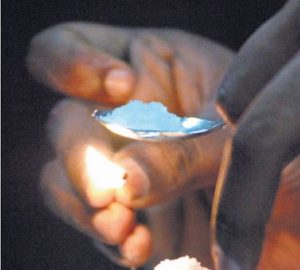
(Sharma, 2014)
Mental Health Stigma
Mental health is a subject that is almost completely taboo in Indian society. Any mental health problem- whether it be anxiety, depression, or, addiction- is often viewed with immediate apprehension and horror. Mental health issues are seen as a sign of weakness, instability, and undesirability in Indian society, and their very mention can rob entire families of respect and honor. This unfortunate stigma means that mental health issues routinely go unreported and untreated in India (Banerjee, 2016). This has resulted in high rates of suicide and the inability to effectively manage mental health-related conditions (Tahseeni, 2015).
The Drug Problem
It has also led to the drug problem in India, and Delhi, spiraling out of control. There are a large number of individuals in urban areas like Delhi, including women and children, who are addicted to varying kinds of mind-altering substances. Most of the addicts are from socioeconomically underprivileged backgrounds, and they have few opportunities to move up the socioeconomic ladder (Murthy, Manjunatha, Subodh, Kumar Chand, & Benegal, 2010). For them, drugs are cheap and easy to come by, and once they are addicted, it is very hard to stop due to both a lack of health knowledge/resources and the social stigma prevalent in Indian society. The subject of drug addiction, like other mental health problems, is basically taboo, and is almost always hushed up and swept under the rug. It is near impossible for an addict on the margins of society to come out and admit his/her illness and then receive the required support and help to overcome it. This is why drug addiction is such a problem in India, particularly among struggling individuals in urban centers like Delhi (“Straight Life,”2015).
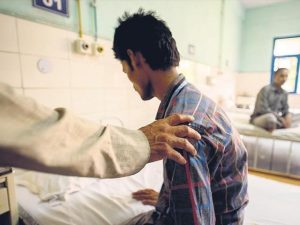
(Banerjee, 2016)
Current Policies
Unfortunately, the policy framework India currently has in place does little to rectify this problem. The current national drug law is the Narcotic Drugs and Psychotropic Substances Act of 1985, which prohibits “the cultivation, production, possession, sale, purchase, trade, import, export, use and consumption of narcotic drugs and psychotropic substances except for medical and scientific purposes in accordance with the law ” (Tandon, 2015, pg. 2). The implementation of this policy has mainly focused on crackdowns and arrests, with little emphasis on rehabilitation and treatment (Tandon, 2015). This is directly related to the inability of many in India to see addiction and mental health as legitimate problems that require understanding and help. Some progress has been made, such as the set-up of the National Centre for Substance Abuse prevention (NC-DAP) in 1998, but the policies in place today do not do anywhere near enough to break down the stigma and address the problem at its roots (“Drug Abuse Prevention,” 2015).
Fact: Actress Deepika Padukone recently came clean to the media about her struggles with depression, making her one of the few high profile figures in India to speak out about mental health awareness (Banerjee, 2016).

